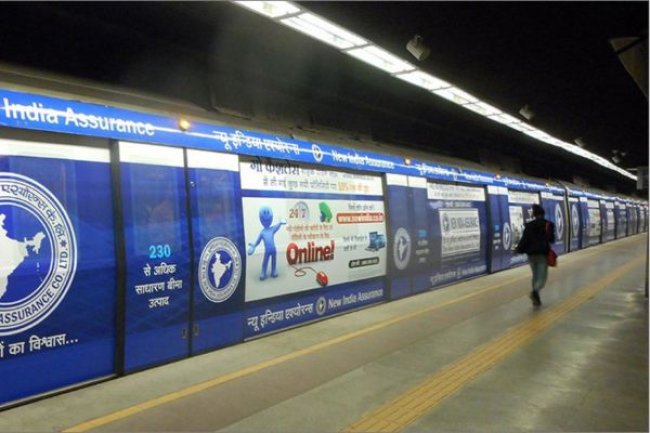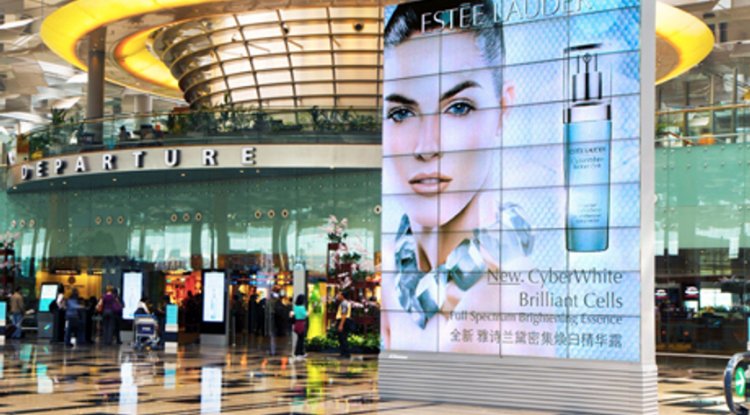Transit Media: Which connecting brands with Consumers offline
In today's fast-paced world, where people are constantly on the move, reaching consumers with impactful advertising has become both a challenge and an opportunity. Transit media, a dynamic and innovative advertising channel, has emerged as a bridge that connects brands with commuters. This blog explores the concept of transit media, its significance in the advertising landscape, and how it effectively engages with the modern, mobile consumer.

Understanding of Transit Media
In today's fast-paced world, where people are constantly on the move, reaching consumers with impactful advertising has become both a challenge and an opportunity. Transit media, a dynamic and innovative advertising channel, has emerged as a bridge that connects brands with commuters. This blog explores the concept of transit media, its significance in the advertising landscape, and how it effectively engages with the modern, mobile consumer.
Benefits of Transit Media: Reach
One of the key advantages of transit media is its unparalleled reach. Consider the sheer number of people who use public transportation daily in a bustling city. Each passenger presents an opportunity for brands to make an impression. Whether it's a student immersed in a book, a professional scrolling through their phone, or a tourist absorbing the local sights, transit media taps into these moments of downtime during the commute.
Benefits of Engagement:
In an age where traditional advertising is often overlooked or avoided, transit media thrives on its ability to engage consumers on the move. Unlike static billboards, transit media can be dynamic, interactive, and even location-specific. Digital screens inside buses can showcase video content, while QR codes at train stations can lead commuters to immersive brand experiences. This engagement not only captures attention but also leaves a lasting impact.

Contextual Relevance
Transit media offers an inherent advantage of contextual relevance. Advertisers can tailor their messages based on the demographics of the commuters and the specific location. A coffee brand might promote its morning brew to early commuters, while a fitness brand could target those headed to the gym. This customization ensures that the message resonates with the audience at the right time and place.
Creativity Unleashed
Transit media encourages creativity in advertising. Brands have the freedom to experiment with unique formats, visuals, and copywriting that can turn a mundane commute into an unforgettable experience. Clever and witty campaigns often thrive in this space, as they capture attention and spark conversations among commuters.
Creativity Unleashed
While transit media offers numerous benefits, it also comes with challenges. Advertisers need to ensure that the message is concise and easily digestible, given the limited exposure time. Additionally, measuring the effectiveness of transit media campaigns can be complex. However, with advancements in technology, tools for tracking engagement and conversion rates are becoming more sophisticated.
The future of transit media is promising. As cities continue to expand and public transportation evolves, the opportunities for advertisers will only grow. Integration with digital technologies such as augmented reality (AR) and location-based targeting will further enhance the impact of transit media.

Case Studies: Successful Transit Media Campaigns
Apple AirPods in London: Apple's iconic silhouette ads at London's Underground stations turned into a powerful symbol of urban culture and music.
IKEA on Paris Metro: IKEA transformed a Parisian metro station into a cozy living room, showcasing its furniture in an unexpected setting.
Coca-Cola's Interactive Buses: Coca-Cola utilized interactive touchscreens on buses in Europe, allowing commuters to play games and win prizes.
Conclusion:
Transit media has evolved from being a mode of transportation into an innovative advertising canvas. Its ability to reach, engage, and captivate a diverse audience on the move makes it a valuable addition to modern marketing strategies. As technology continues to reshape the advertising landscape, transit media remains a dynamic channel that connects brands with commuters and turns routine journeys into memorable brand experiences.
What's Your Reaction?




















